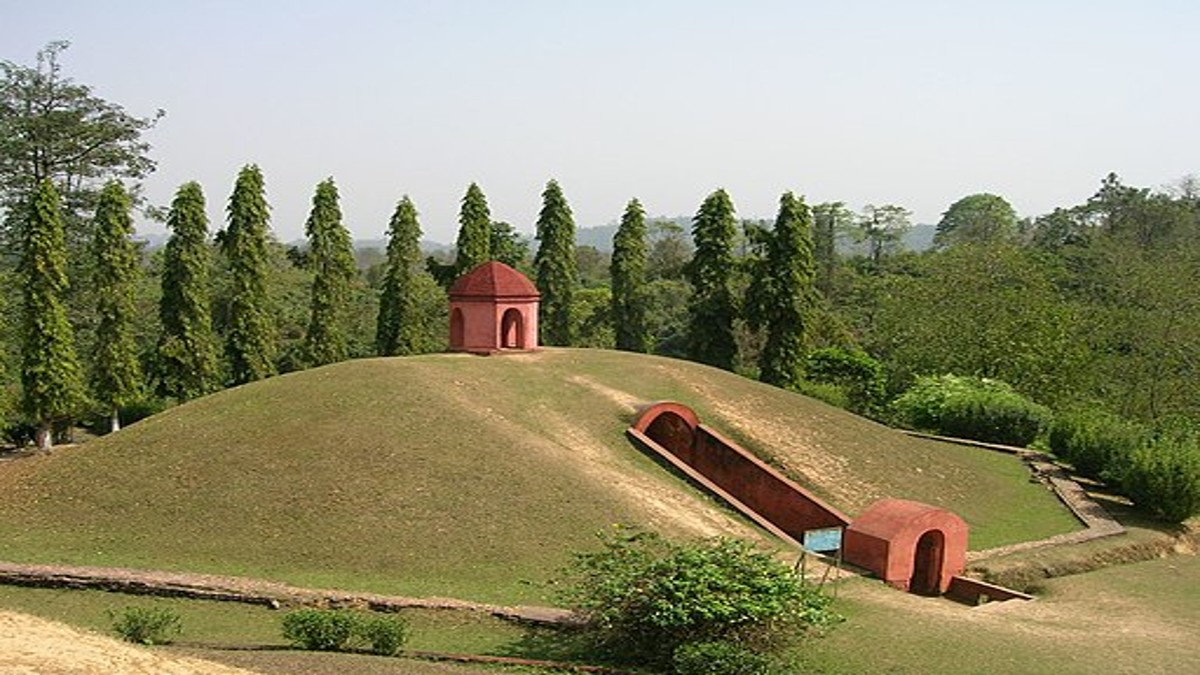"Dream, Dream, Dream! Conduct these dreams into thoughts, and then transform them into action."
- Dr. A. P. J. Abdul Kalam
"Dream, Dream, Dream! Conduct these dreams into thoughts, and then transform them into action."
- Dr. A. P. J. Abdul Kalam
30 Jul 2024
Assam’s ancient "Moidams" mound-burial system of the Ahom dynasty achieved a historic milestone on Friday as it became the first cultural site from the Northeast to be added to the UNESCO World Heritage List. The announcement came during the 46th session of the World Heritage Committee, held in New Delhi, where UNESCO specialists reviewed and approved a list of proposed sites.
)
(Source: Google Images )
Ahom kings and queens were buried in mounds at the Charaideo Moidams, a mound burial system in the state of Assam. They were constructed by covering a hollow vault with earth, stone, or bricks. According to a representative of ICOMOS, the World Heritage Committee's advisory organization, the selected site has 90 monuments of various sizes that were constructed over 600 years. It also includes other cultural elements including ceremonial routes and pools of water. "The Moidams are an exceptional example of an Ahom necropolis that represents funeral traditions and associated beliefs in a tangible way," they said.
Following their migration from China, the Ahom clan established their capital in various locations within the Brahmaputra River Valley between the 12th and 18th centuries, as stated on the website of the U.N. Cultural Agency. Their initial capital, Charaideo (meaning "a dazzling city above the mountain" in their tongue), was founded in the Patkai highlands of eastern India. The burial spot the clan constructed was regarded as the most hallowed location for the royals' deceased souls, despite the fact that they traveled across cities. Experts compare the shrines to the Chinese royal tombs and the Egyptian pharaohs' pyramids, arguing that they demonstrate the skill and architectural design of Assamese masons. According to UNESCO, this location contains the highest concentration of these vaulted mound burials and captures the hills' carved topography.
Despite obstacles from early 20th-century treasure seekers, the Archaeological Survey of India and the Assam State Department of Archaeology have worked together to restore and preserve the integrity of Choraideo. The site is carefully maintained to preserve its structural integrity and cultural uniqueness, protected by both federal and state legislation."Moidams recognition as a UNESCO World Heritage Site serves as a reminder of the importance of conserving our Cultural Heritage for future generations” by Shri Gajendra Singh Shekhawat